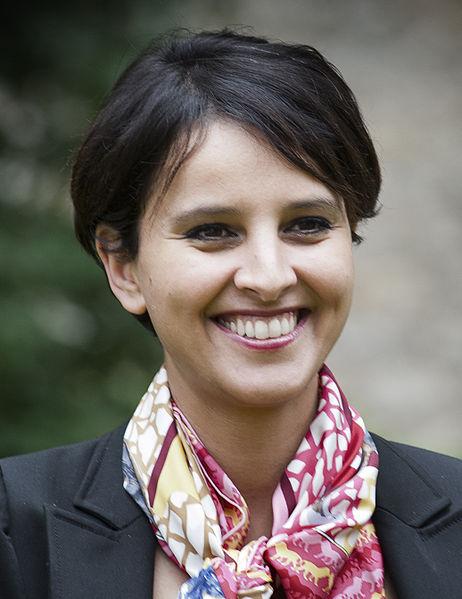France’s education minister has announced a new ban on long robes in classrooms, a measure that primarily affects Muslim students who wear them as part of their religious attire. The decision has ignited debate over secularism, religious freedom, and the role of religious symbols in French public schools. This latest move reflects ongoing tensions in France’s efforts to maintain a strict separation between religion and state within its education system.
France’s Education Minister Announces Ban on Long Robes in Schools
The recent directive from the French Education Ministry has stirred intense debate across the nation. The prohibition targets the wearing of long robes, garments predominantly worn by Muslim students within public schools. Officials argue the move is grounded in secular principles, aiming to maintain neutrality in educational environments. However, critics view it as a measure that disproportionately affects Muslim communities, potentially infringing on religious expression and personal freedoms.
Key points surrounding the ban include:
- Scope of Ban: Applies to public educational institutions nationwide.
- Rationale: Reinforcing secularism and uniformity in classrooms.
- Reactions: Mixed responses from community leaders, parents, and human rights advocates.
- Enforcement: Schools tasked with ensuring compliance starting next academic year.
| Aspect | Details |
|---|---|
| Targeted Garment | Long Robe (Jilbab) |
| Demographic Mainly Affected | Muslim female students |
| Primary Justification | Secularism and school neutrality |
| Implementation Date | Next academic year |
Impact on Muslim Students and Community Reactions Across the Country
The ban on long robes has sparked significant concern among Muslim students, many of whom view the policy as a direct challenge to their religious identity and freedom of expression within educational environments. Several students have shared feelings of alienation and cultural targeting, emphasizing that the garment is not just attire but a symbol of faith and personal dignity. Critics argue the measure may inadvertently fuel a sense of exclusion and marginalization, potentially affecting attendance and academic performance among affected youth.
Across the nation, community leaders, activists, and advocacy groups have responded with a mixture of protests, petitions, and calls for dialogue. Many emphasize the need for policies that respect religious diversity while promoting secular values. Below is a summary of key reactions:
- Civil rights groups: Condemn the ban as discriminatory and call for legal challenges.
- Educational associations: Urge for inclusive policies that accommodate religious attire.
- Government officials: Defend the ban as necessary for secularism and classroom neutrality.
- Parents’ organizations: Show divided opinions, some supporting discipline, others worried about exclusion.
| Region | Community Response | Student Impact Reported |
|---|---|---|
| ĂŽle-de-France | Numerous protests and media campaigns | Rise in absenteeism among Muslim students |
| Provence-Alpes-CĂ´te d’Azur | Petitions and interfaith meetings | Expressions of fear and confusion |
| Auvergne-RhĂ´ne-Alpes | Public debates and school forums | Calls for dialogue from educators |
Legal and Social Implications of the New Dress Code Policy
The policy has sparked a heated debate over the intersection of religious freedom and state secularism. Supporters argue it enforces a neutral learning environment, essential for maintaining equality and minimizing religious influence in public schools. Critics, however, contend that the ban disproportionately targets Muslim students, effectively marginalizing a specific community and raising concerns over discrimination and social exclusion. Legal experts are now scrutinizing whether this measure aligns with France’s constitutional guarantees on freedom of religion and expression.
Socially, the ban risks deepening societal divides and alienating Muslim youth, potentially fostering feelings of isolation or stigmatization. Key reactions from various groups include:
- Human rights organizations warning against potential violations of international human rights laws.
- Parents and students expressing anxiety over changes to their daily lives and personal identity.
- Government officials emphasizing the need to uphold secular principles in educational spaces.
| Aspect | Legal Concerns | Social Impact |
|---|---|---|
| Religious Expression | Potential infringement on rights | Community alienation |
| Equality | Challenges in upholding neutrality | Perceived discrimination |
| School Environment | Ensures secularism | Increased tensions |
Recommendations for Schools Navigating Cultural Sensitivities and Uniform Regulations
Schools face a complex challenge when addressing uniform regulations that intersect with cultural and religious practices. To foster an inclusive environment while maintaining consistent standards, administrators must engage in open dialogue with students, parents, and community leaders. Creating platforms for conversations helps schools understand the cultural significance behind certain attire, reducing misunderstandings and potential conflicts. Additionally, policies should be clearly communicated and designed with flexibility to accommodate diversity without compromising the institution’s educational mission.
Adopting a framework that balances respect for cultural expression with uniformity is essential. Consider the following best practices to navigate these sensitivities effectively:
- Consultation Committees: Establish diverse advisory groups including religious and cultural representatives.
- Cultural Awareness Training: Provide staff with resources to understand and sensitively respond to cultural attire.
- Clear and Transparent Guidelines: Ensure uniform policies clearly outline acceptable modifications and the rationale behind restrictions.
- Inclusive Policy Reviews: Periodically revisit regulations to reflect evolving community dynamics and legal frameworks.
| Aspect | Recommendation | Benefit |
|---|---|---|
| Engagement | Host open forums with stakeholders | Builds trust and transparency |
| Policy Clarity | Define specific dress code allowances | Minimizes ambiguity and disputes |
| Training | Implement cultural sensitivity workshops | Enhances staff responsiveness |
Key Takeaways
As France’s education minister moves forward with the ban on long robes in classrooms, the decision ignites ongoing debates over secularism, religious expression, and individual rights within the country’s public education system. Critics argue the measure disproportionately targets Muslim students, while supporters maintain it is necessary to uphold France’s principles of laïcité. The discussion reflects broader tensions in French society as it grapples with balancing cultural diversity and national identity. The impact of this policy will continue to unfold as schools adapt and communities respond in the coming months.




